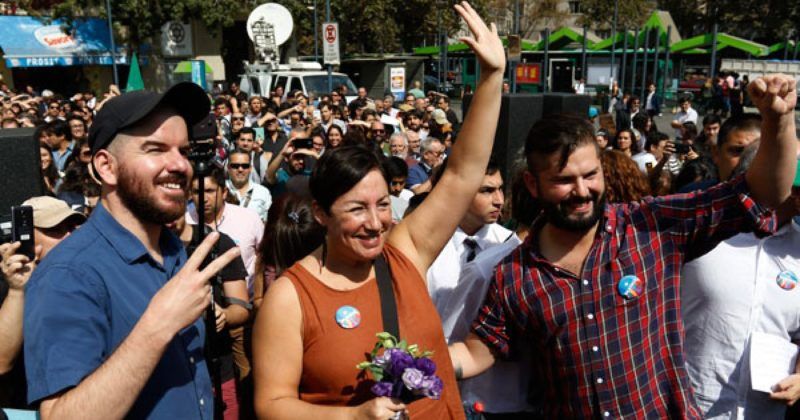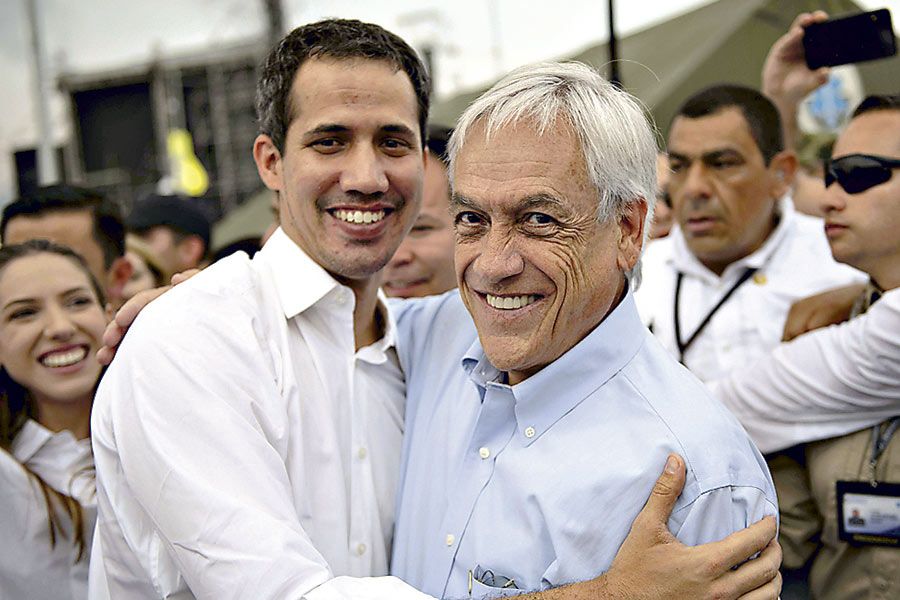
Por TOMÁS CROQUEVIELLE H.
Licenciado en Historia y Periodista
Pontificia Universidad Católica de Chile
The division within Chile’s center-left political parties is allowing the right to capture the center and reduce its opposition to the “extreme left”; and the crisis in Venezuela might turn out to be an accelerant, because it’s the best opportunity the current administration has to be perceived as the new defenders of human rights and democracy in Chile.
Chile’s response to the current crisis in Venezuela is one of the best examples of the decline of Chile’s political center. From Chile Vamos (a coalition of right-wing and center-right parties) to El Frente Amplio (a coalition of left-wing and center-left parties), politicians have been forced to choose between the Maduro government and the overthrow of his presidency. This dichotomy exemplifies the current political polarization and the decline of moderate voices in Chile.
Three decades of coalitions from the center
For almost three decades of democracy in Chile, the political landscape has been dominated by center and center-left coalitions, La Concertación de Partidos por la Democracia (La Concertación), and its successor, Nueva Mayoría(NM), which added a few more parties, including El Partido Comunista de Chile. These coalitions have administered the Chilean State 24 of the last 29 years. Nevertheless, most of this time, they governed by consensus and agreement with right-wing parties Renovación Nacional and Unión Democrática Independiente.
In that political context, La Concertación and NM always occupied the center, which assured them an electoral majority. Public opinion also favored them. Most of the electorate believed that the center-left and centrist parties were the political forces that supported and defended human rights and democracy. In contrast, the right-wing parties were perceived as the ones who supported Pinochet’s military dictatorship and its legacy.
Change under Piñera
Many of those perceptions changed with the first Piñera administration (2010-14), because he mostly governed the same way La Concertación had before him.
Now, in Piñera’s second term as president, his government and political coalition have been trying to become the new defenders of human rights and democracy, even as some members of that coalition still defend Pinochet’s legacy.
Two of the best examples of this new attitude and strategy are the Piñera administration’s commemoration of the 30th anniversary of the victory of the 1988 “No” referendum directed at Pinochet; and Piñera’s trip to Cúcuta, ostensibly to support the forced introduction of humanitarian aid to Venezuela, but in actuality little more than a PR stunt to “sharpen his right-wing profile.”

In this regard, the 2017 election was a turning point for Chile’s political scene. Piñera’s landslide victory over the progressive candidate, Senator Alejandro Guillier, was largely thanks to votes from many former La Concertaciónand NM supporters, who felt Guillier, the former center-left candidate, had moved too far to the left.
It’s also no coincidence that Piñera’s last campaign used the same themes and symbols that La Concertación used in the early 1990s, which appeal to unity, consensus, and a non-ideological concept of democratic values, such as, diversity, integration, and pluralism.
At the same time, the last presidential and parliamentary elections marked the rise of the new left-wing coalition, Frente Amplio, which now has representation in Congress primarily because of the fatigue in the electorate of the traditional center-left parties.
Even though it occupies less seats in Congress than its antecedents La Concertación and NM, the new left-wing coalition has become the de facto opposition leader, polarizing the Chilean political debate, and forcing the current administration to move farther to the right in order to mark a clear contrast with the opposition.
At the same time, the former coalitions of La Concertación and NM, now unraveled, find themselves in the awkward position of being part of the opposition, while, at the same time, trying not to be perceived as obstructionist and far-left.
During the last runoff election, for example, the Piñera campaign succeeded in smearing the Guillier candidacy with “Chilezuela,” the idea that Guillier wanted to transform the “free and prosperous” Chile into a country like the “socialist and undemocratic” Venezuela.
This type of political framing against the left and center-left, coupled with the present situation in Venezuela, are what the current administration and Chile Vamos hope to use to capture the political center and attract the majority of Chile’s electorate, which is moderate, and reduce the opposition to the “extreme” left.
In that way, they hope to become the new and permanent referent of Chilean democracy and political responsibility—the new Concertación, a political coalition that was able to win four presidential elections in a row. Only time will tell how far they can replicate immediate post-dictatorship governance in right-wing guise.
*Imagen de cabecera propiedad de poderyliderazgo.cl.